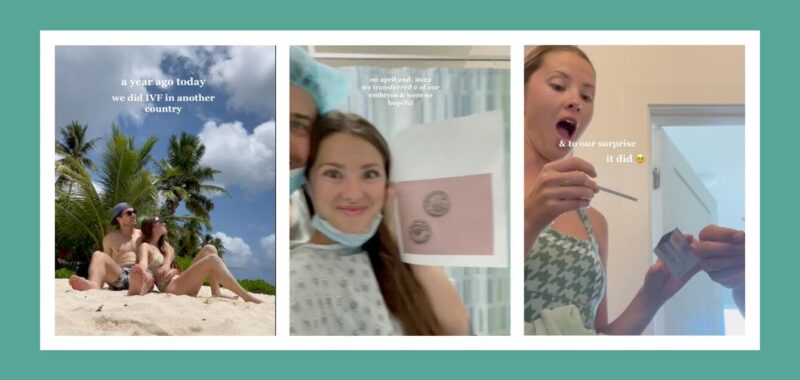Amanda Lacommare and her husband, Leonardo, tried everything for three years to become parents. They went through rounds of IUI, two cycles of IVF, and piled up tens of thousands in medical debt. The endless procedures and constant disappointment were overwhelming.
When they were close to giving up, Amanda stumbled upon a TikTok video that would change everything. In it, a woman shared her story of finding IVF success overseas at the Barbados Fertility Clinic. After doing her research, Amanda thought, “Why not us?”
Just when they were close to giving up, Amanda stumbled upon a TikTok video that would change everything. In it, a woman shared her story of finding IVF success overseas at the Barbados Fertility Clinic. After doing her own research, Amanda thought, “Why not us?”
Two trips to Barbados, covering all expenses from flights to groceries, cost them about $30,000—half the price of IVF in Florida. This time, it worked. In 2023, Amanda and Leonardo welcomed their son, Mateo, into the world. The risk they took suddenly felt more than worth it.
Now they’re sharing their story in a viral TikTok that has accumulated over 3.4M views, resonating with hopeful parents considering every option to build their families.
What is medical tourism?
For Amanda, going abroad was a last resort. Medical tourism—traveling internationally for medical care—isn’t new, but social media success stories inspire more people to give it a shot. According to the CDC, millions of U.S. residents travel abroad each year to seek healthcare services. IVF is a significant factor, with clinics abroad offering prices up to 50% lower than U.S. clinics.
However, medical tourism has risks, like potential infections or communication challenges. Amanda acknowledges this but says the possible reward outweighed the risks. “My biggest fear was going out of the country,” Amanda shares, “but now I wish I’d done it sooner.”
What Amanda loved most was the personalized care she received in Barbados. During her complimentary consultation, the doctor suspected high natural killer cells could be affecting her pregnancies—something her U.S. doctors hadn’t identified. After a specialized test in Chicago confirmed the condition, Amanda followed a tailored plan to suppress her immune system. With her sister’s help as an egg donor and two more cycles, Mateo was finally on his way.
In Barbados, Amanda’s experience went beyond standard fertility care. She received acupuncture, Reiki, and stress management support, which made her feel truly cared for. Amanda hopes her story inspires others to explore all options while taking the necessary precautions.
The ripple effect of accessible and affordable reproductive care
Amanda and Leonardo’s story highlights a reality faced by many aspiring parents: the prohibitive cost of fertility treatments and limited access to quality care in the U.S. Reproductive rights aren’t just about the choice to avoid pregnancy—they’re also about the right to seek support in building a family.
IVF and other fertility treatments are financially out of reach for many, with the average cost of a single IVF cycle in the U.S. hovering around $12,000 to $15,000, and insurance coverage often sparse or nonexistent. Without adequate coverage or accessible options, people are usually forced into extreme measures or, as in Amanda’s case, seeking solutions abroad.
Ensuring that reproductive care is affordable and accessible in the U.S. is essential to supporting all families. By expanding affordable access to fertility treatments, we support healthier, more inclusive communities where people can make empowered decisions about their family-building journeys. Policymakers and healthcare leaders must recognize that ensuring affordable reproductive care for all is both a moral imperative and an investment in our collective future.
Supporting affordable access to fertility care doesn’t just impact individual families—it strengthens our communities and gives every hopeful parent the chance to pursue their dream of family.

